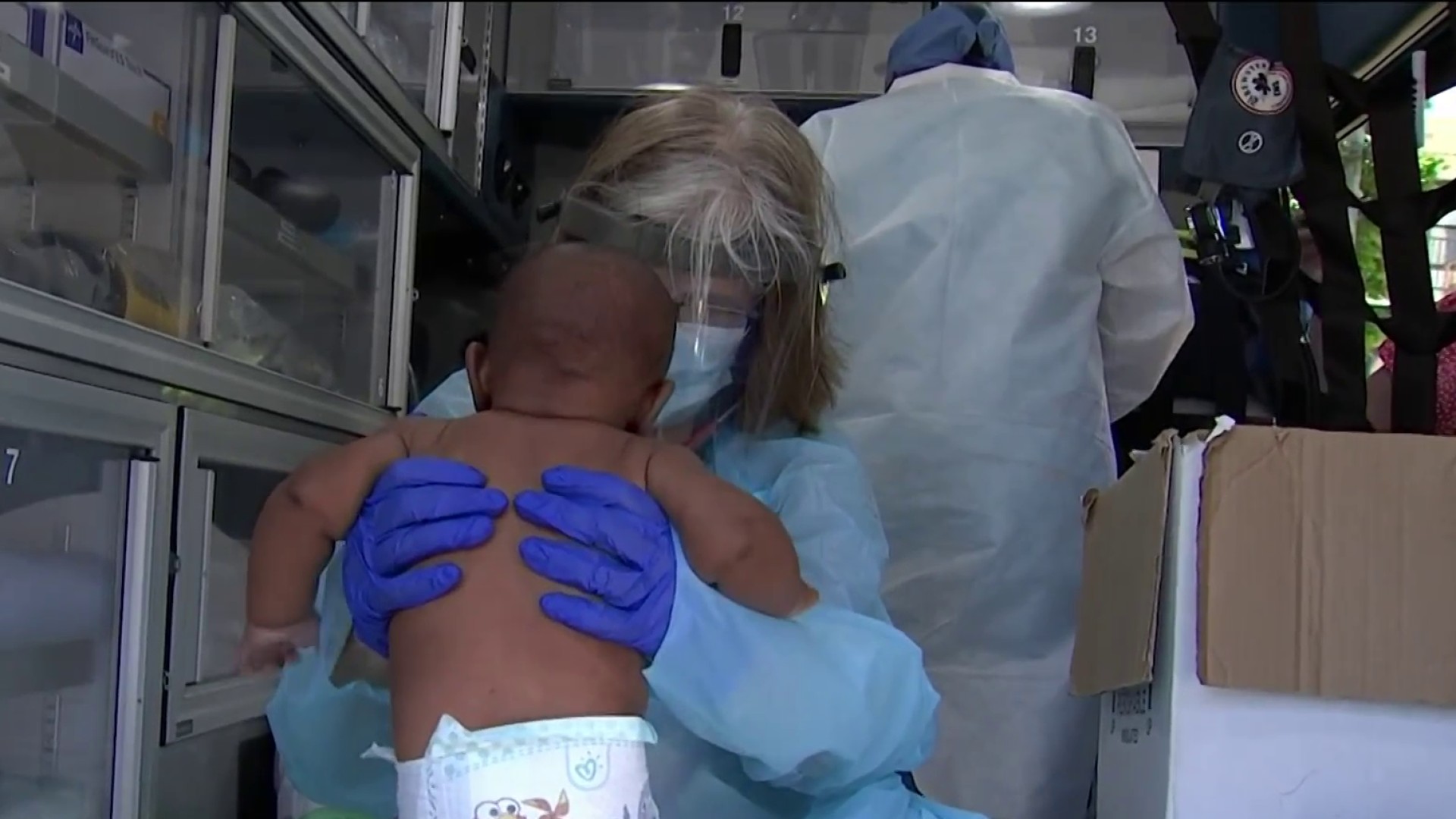After months of remote learning and uncertainty, Massachusetts has released long-awaited state guidelines outlining what school might look like for teachers and students in the fall.
A memo released Thursday outlined expected safety protocols at schools. Education Commissioner Jeffrey Riley instructed educators to prepare for three possible scenarios: A full-scale return to school, a mix of in-person and remote learning or exclusive remote learning.
"We're talking about a school year that starts a few months from now, and sometimes it's difficult to forecast where exactly we'll be when it comes to September," Gov. Charlie Baker said at a press conference Thursday. "But now districts can get to work on their preparations to get ready for the fall."
"Parents and guardians have done their part," he added, "stepping up in extraordinary ways virtually overnight to become educators in an enormously challenging time. Now we have an obligation to do everything we can to get kids back to the classroom so they can benefit from the guidance of teachers."
The memo instructs districts to submit three fall reopening plans by August -- one for each scenario.
The guidance calls for students in the second grade and up -- as well as adults -- to wear masks or face coverings and maintain physical distance. Desks should be a minimum of three feet apart but ideally six feet apart. Students will also likely have to eat breakfast and lunch in their classrooms.
Schools should have extra disposable face coverings for students who need them, according to the guidance, but students should bring masks from home whenever possible.
Temperature and symptom checks should be conducted at home before heading to school, the memo says. The guidance instructs districts to educate families on how to conduct screenings properly and to emphasize that students should stay home if they're not feeling well. The state will create a symptom checklist for districts to distribute.
Schools must designate an isolated space, separate from the nurse’s office, where students who shows symptoms during the school day can stay until they can be picked up. At this point, the state is not recommending that school districts provide testing.
Students and staff will also be required to wash their hands when they get to school, before they eat, before putting on or taking off masks and when they leave. Hand sanitizer should be placed throughout the building, including at entrances, cafeterias and in classrooms.
The guidelines don’t limit the number of students per classroom as did guidance previously released by DESE. The initial guidance is one of "several updates," districts will receive from the state, and Riley said additional fall guidance will be released in July.
"We know we are not out of the woods yet in combating this virus. We need to live with it and we need to continue to be cautious and vigilant in fighting this disease," Lt. Gov. Karyn Polito said. "But going back to school has always felt like a new beginning. Getting our children back to school this fall is critical to their continued development both in and out of the classroom. Our kids deserve it. They deserve the opportunity to grow and succeed here in our Commonwealth."
The school reopening plan has been endorsed by the Massachusetts chapter of the American Academy of Pediatrics, which represents over 700 pediatricians across the state.
Baker also said Thursday that he is making available $200 million in additional funding for school district costs related to reopening.
Parents are torn over the guidelines.
"Not sure what's going to happen, but I struggle with the remote learning. But I get it, I get that we have to be safe and keep the children safe," said Deb McDonald, a parent from Oxford whose son hopes to go to Bay Path University in the fall.
"They couldn't keep it on walking through the store," Charles Fegreus said of children wearing masks. His son is going into seventh grade at Sullivan Middle School in Worcester.
Educators also expressed mixed feelings Thursday.
"As a teacher, it is overwhelming," said Crystal Collier, a resource teacher at Blackstone Elementary School in Boston. "I miss my students, we want to be with them."
Collier says while she's not looking forward to teaching in a mask, or preparing both in-class and online lessons, she appreciates the state's push to get them back into the classrooms.
"We as teachers now have to develop some new skills and new techniques to still keep thing interactive, but also to keep kids safe," said Collier.
After the governor ordered schools to shut down in March, the state created a working group composed of parents, teachers and public safety officials to get input on how to reopen safely in the fall.
Evidence suggests that children are less likely to be infected and to transmit coronavirus to others than adults, according to medical literature referenced in the memo. In a review of COVID clusters, 4 percent involved school transmission. And although children under the age of 18 make up 22 percent of the U.S. population, they account for less than 2 percent of all cases, according to the guidance.



